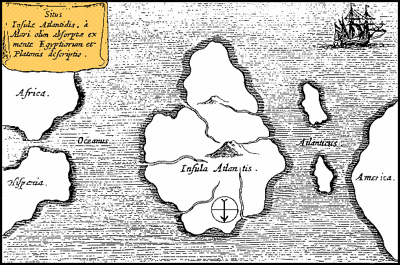From age five (January 1972) to age eight (1975), my subscription to Time-Life Books's series The Emergence of Man brought each of the twenty volumes to me, one at a time, from Life Before Man to The Persians (and many blessings upon my father for realizing that even at that young age I would love and devour these books intended for adults). As a very young child, I was most interested in the early volumes, dinosaurs and Neanderthals being more to my taste than early civilizations, but later, in 1979, in eighth grade, when I was searching for a model for a glorious palace to be my characters' home base, it was the later volumes on Greece, Rome, and ultimately Persia I searched for inspiration.
In the end, I modeled our home base of Mainore on the floor plan of a royal Persian palace from The Persians. For some reason, the players were a bit aggressive with one another, seeking out and attacking one another's home bases (not an activity I participated in, except as a defender against it), so Mainore had to be more than a palace. It had to be fortified as well, a castle. True to the original D&D end game, my characters recruited armies of followers and made use of magical items and spells to defend Mainore from the henchmen of the other players. Evidently my several generations of maps of the palace of Mainore are long-since lost, though I could easily and may yet recreate the first draft, which was a near-copy of the Persian original.
Although at first that was sufficient defense, during the escalating inter-player struggles of late eighth grade it wasn't long before I needed to find a far more obscure, far more difficult-to-find or -reach location for the palace. Using one of my characters' powerful magics, my characters traveled back in time to long before the sinking of Atlantis and rebuilt their palace-castle there and then (in the ten mile by ten mile area granted them by the deal described in the previous post) where the other players' more conventional characters could not possibly reach us.
The Atlantis my characters lived in was based on Athanasius Kircher's 1669 map from his work Mundus Subterraneus, as reproduced in Charles Berlitz's 1969 book The Mystery of Atlantis. I inverted it to place north at the top of the map and added details based on descriptions of Atlantis by Plato and others. For names of the seven kingdoms and geographical features I coined names from the Sindarin and Quenya languages invented by Tolkien as documented in the appendices to The Return of the King.
Since my brother Rob's characters also needed safe haven and land to develop a home base of their own, I developed an island archipelago to the south of Atlantis inspired by the maps in Ursula Le Guin's A Wizard of Earthsea.
By ninth grade, the D&D players of south Seattle outgrew their pointless internecine competition and matured into DMs, and their home bases were increasingly converted and developed into campaign settings for other players to enjoy. As relations improved, I too converted Atlantis from a hidden home base to a campaign setting, first sinking it to the bottom of the ocean, then relocating it on the moon, then transplanting it by 1981 (tenth grade, after moving from Seattle to Walla Walla) onto a planet of its own, then finally to an artificial planet in the shape of a great wheel that spun through space on an alternate plane of existence (a fairly original idea arrived at quite pragmatically after a year of struggling with the problem of accurately transposing a spherical map onto a flat piece of paper).
From its peculiar origins in 1979 until my abandonment of it and of D&D for many years starting in 1989, Dagorëa, as the wheelworld and my campaign was named, was my first serious campaign setting. It developed into one of maybe a half dozen core campaigns of the Walla Walla Super Advanced Dungeons & Dragons (SAD&D) gaming community, and it single-handedly changed my life.
Fr. Peter Heers and the Satanic Panic
-
A reader of my blog recently reached out to me. He shared a video of Fr.
Peter Heers, an influential Orthodox Christian YouTuber, answering the
question ...
2 months ago




No comments:
Post a Comment